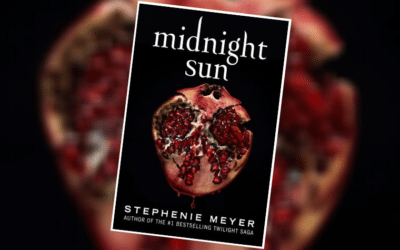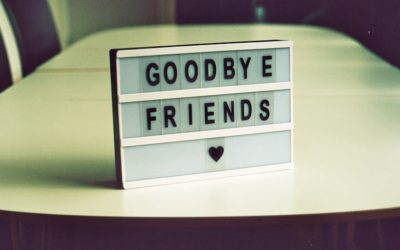Yep. All that. And more as well. Growing up in Memphis, Southern Gothic isn’t just a genre I studied in 11th grade American lit. It was life. It was the stories about my great-grandfather, Archie, an alcoholic who would have murdered my nanny and my mammaw if a police officer hadn’t walked them home from church one night and seen him hiding behind the door with a knife. It was the cloudy memories of listening to derelict cousins complain about money, land and the keys to the hope chest at a humid funeral home. It’s the knowledge that underneath the moss there was mold, that behind the begonias there were bodies.
Southern Gothic has tricks up its sleeves. It smiles as it strikes. And it’s nothing if not full of contradictions. It’s about poverty and privilege. It’s about mental illness and machinations. It’s drenched in body odor and honeysuckle. And HBO’s newest series, Sharp Objects, based on the book by Gillian Flynn of Gone Girl fame, is Southern Gothic at its grittiest and greatest.
It Drips

There are clues that creep behind doors (and some that clobber you over the head) from the first frame. Southern Gothic is full of tiny mysteries hidden in plain sight, and Sharp Objects is adept at showing you just enough to keep you on your toes. You know from the opening scene – two adolescent girls giggling through a free day they’ve pickpocketed from their overbearing momma – that you’re looking at the past (if the ’92 election posters don’t clue you in), but how it fits into the dream it turns out to be is still dripping with mystery. It’s like you are looking at a story through the condensation on a mason jar of sweet tea.
It Drawls
Confession: I hate most onscreen southern accents. Nothing is worse than Kevin Spacey’s dropped r’s. But thankfully, Sharp Objects takes its “spittin’ distance from Tennessee” to heart, and I can listen to Amy Adams be believably from small town Missouri without rolling my eyes.
But even better than that, this show takes its time. A drawl is not just an accent, it’s a measure. It’s slow and steady and surreptitious. And watching Sharp Objects, I can hang onto that pacing whether we are in a St Louis newspaper room, on a freeway, in a Victorian mansion, or a dead end bar. Drawl is dreamscape that might be nightmare. That’s how Sharp Objects feels.
It Dallies
Sharp Objects flirts with the audience and with the truth. I made a particular choice not to read the book with this one (I’ve read Dark Places and Gone Girl both); even though I have had a copy of Sharp Objects for awhile, I’ve never gotten around to it. Would I have enjoyed both of those movies more without knowing what was coming up? Maybe. Most likely, truth be told. I wanted to see if Gillian Flynn could hook me in the same way onscreen as she does so well on the page.
And I’m not disappointed. Showrunner Marti Noxon and director Jean-Marc Vallée are constantly giving the audience a little and taking it away. For example, there are words throughout the show highlighted for a moment and gone again. DIRT written on the back of Camille’s car, not there in the next frame. DRUNK scratched into her desk. WRONG lit up on the face of her after-market stereo system, there and then not. And those are the obvious ones. The reveal at the end of episode 1, Vanish, that Camille is covered in scars made of words, made of insults, made of commands, made of flesh, is almost another tease. Will they be there in the next moment or not?
Adora as a character is a dalliance. We see her for the first time in the barest hint of light; she’s the epitome of that condensation I referred to earlier, as if she’s just a slip of a person behind a bead of water running down a glass. And when we finally meet her, her personality becomes the thing we can’t get a focus on. Sure, she’s overbearing and unctuous, but is she fragile or affected?
The show flirts with procedural drama. The mystery that brings Camille back to her hometown – a second missing young girl – brings with it all the usual suspects: the press-suspicious chief of police, the city-slick visiting detective, the chattering busybody neighbor, the town fear, and even the body in a back alley. But it doesn’t leave us there – it only dallies with the likes of a Dick Wolf story. Thankfully. Because we are all much more interested in these women who helm the one we have.
It Depresses
 In true Southern Gothic style, this story will depress the hell out of you. If you are from a small town or not, if you live in the south or not, doesn’t matter. The futility of these relationships, and the utter despondency of Camille’s present life will thrust you into sadness. This is a story about self-harm, alcoholism and abuse. Behind the backdrop of small town tragedy and fear, are the lives of three Southern women – Camille, Adora and Amma – who are as alike as they are estranged. Amy Adams perfectly sums it up when Camille tells her boss about who she is and where she’s from: “[I’m] trash, from old money.” Nothing is more Southern Gothic than that.
In true Southern Gothic style, this story will depress the hell out of you. If you are from a small town or not, if you live in the south or not, doesn’t matter. The futility of these relationships, and the utter despondency of Camille’s present life will thrust you into sadness. This is a story about self-harm, alcoholism and abuse. Behind the backdrop of small town tragedy and fear, are the lives of three Southern women – Camille, Adora and Amma – who are as alike as they are estranged. Amy Adams perfectly sums it up when Camille tells her boss about who she is and where she’s from: “[I’m] trash, from old money.” Nothing is more Southern Gothic than that.
“My demons are not remotely tackled.”
See what lies ahead on #SharpObjects. pic.twitter.com/QgDs822Xbt
— HBO (@HBO) July 10, 2018




